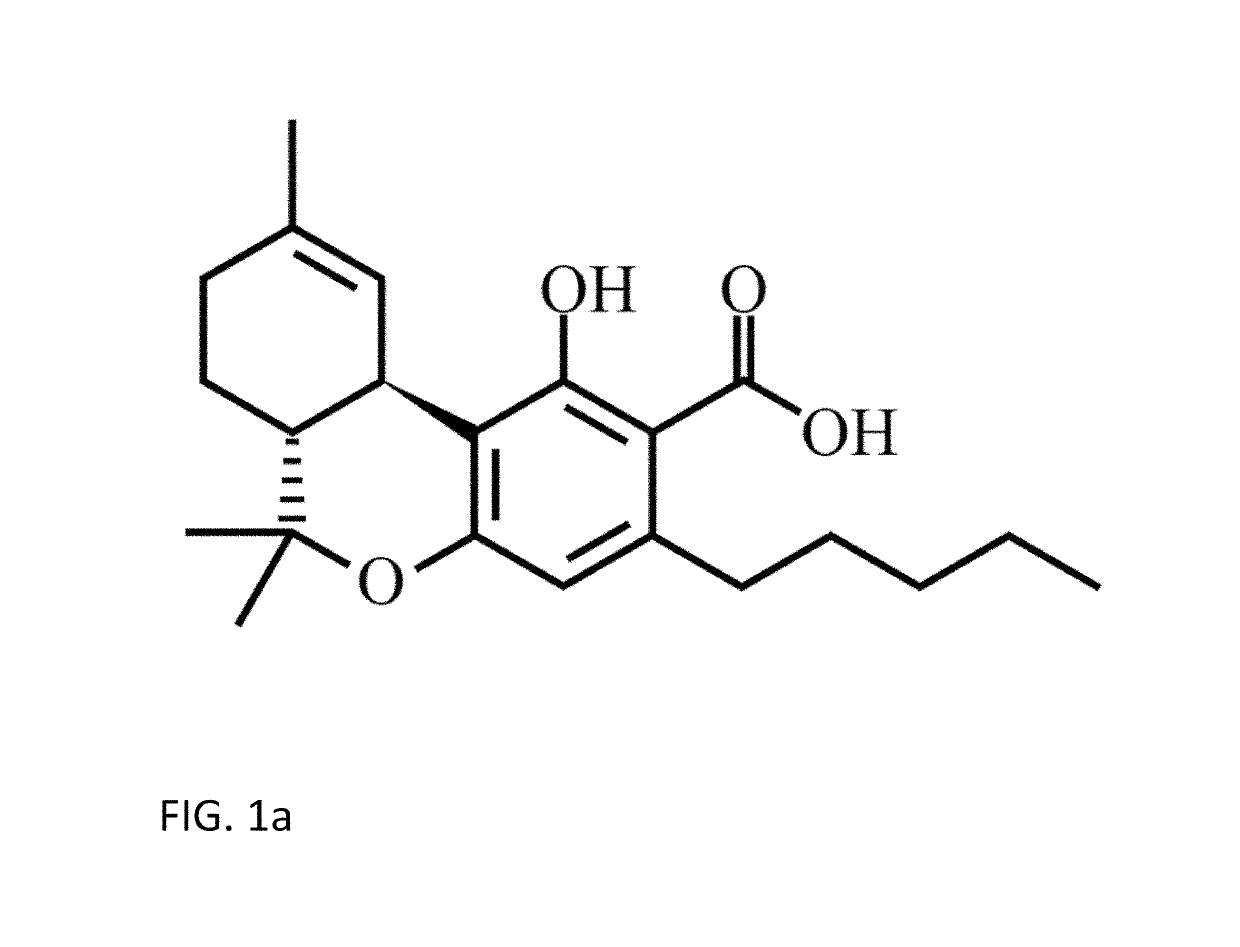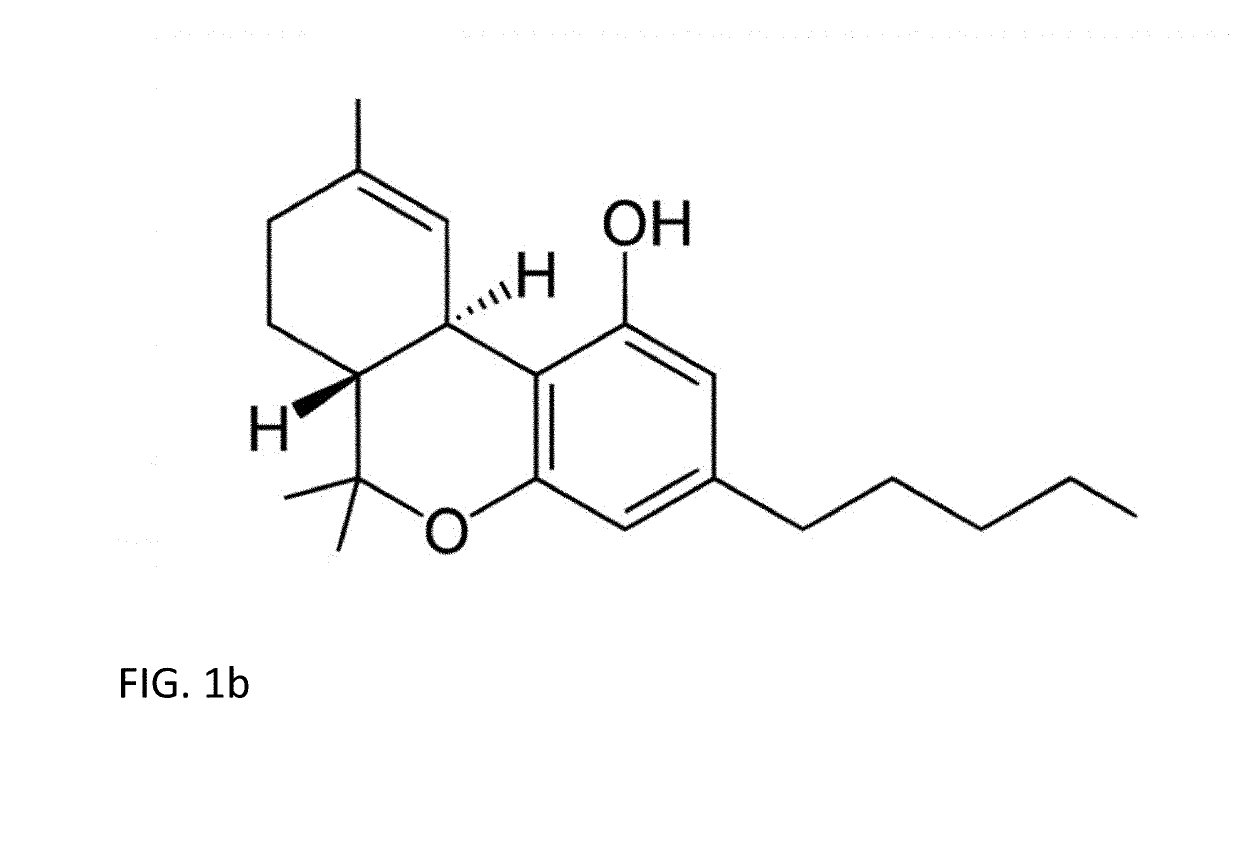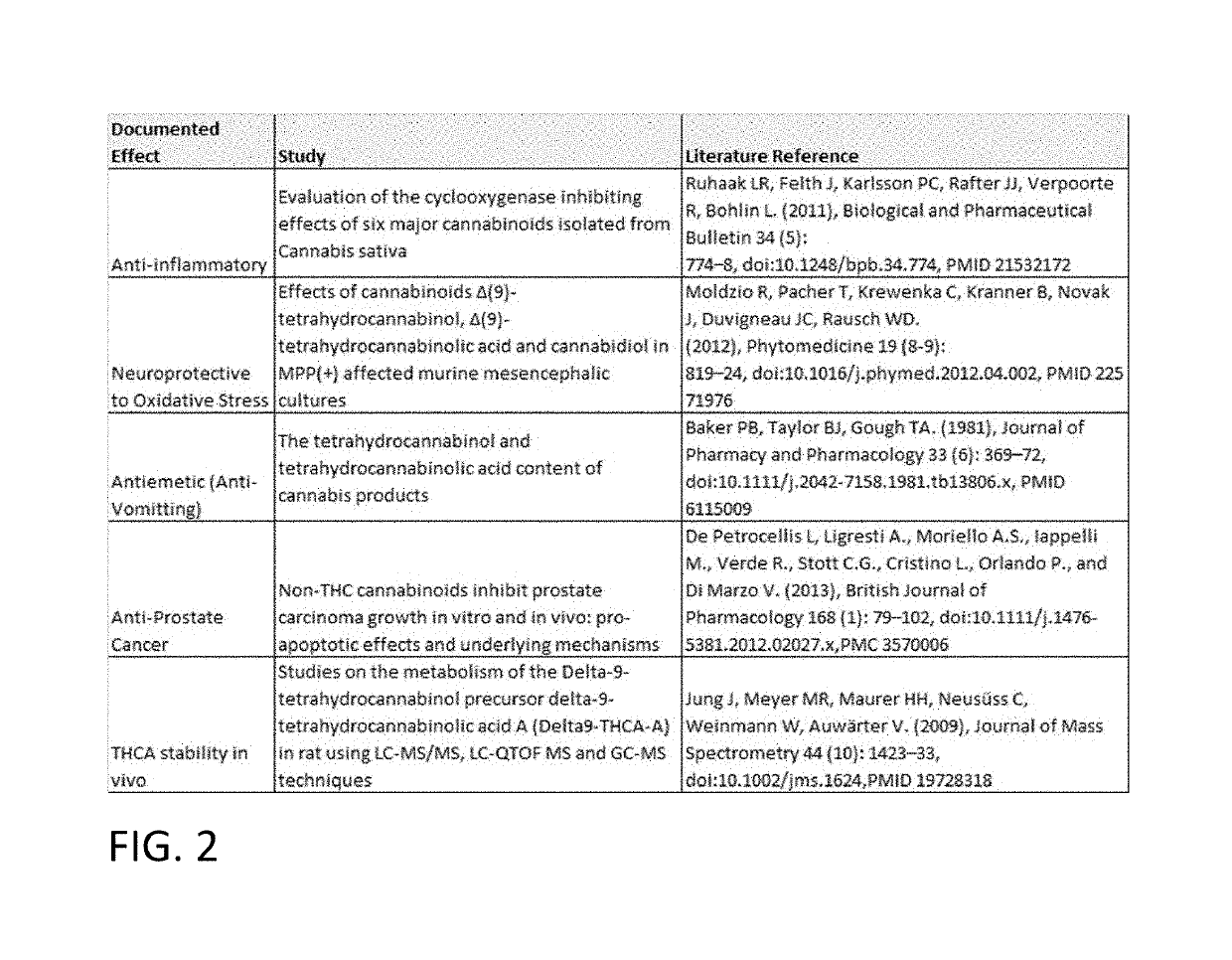Methods for purification of non-psychoactive isoprenoid compounds from biological extracts
a technology of biological extracts and isoprenoid compounds, applied in the field of natural compound isolation, can solve the problems of limited medical usefulness of i>cannabis/i> in many applications and patients, limited pharmaceutical use of specific i>cannabis/i>-derived compounds, and difficult safety and efficacy testing
- Summary
- Abstract
- Description
- Claims
- Application Information
AI Technical Summary
Benefits of technology
Problems solved by technology
Method used
Image
Examples
second embodiment
[0045]this invention is shown in FIG. 6, in which the extraction and crystallization process of material from Cannabis takes place in chambers and solvents that are sparged with inert gas in order to remove oxygen from the process and prevent the degradation of THCA to THC. Destemmed, macerated Cannabis is placed in the extraction chamber in 304. Inert gas is then applied to the extraction chamber in 600, and this inert gas is subsequently removed by vacuum degassing in 601. In 602, inert gas is bubbled through liquefied n-propane. In 603, the liquid n-propane is separated from the headspace gas (including both sparge gas and any gas driven from the liquid n-propane, including H2S, 02, or CO2). In 604, the sparged n-propane is stored under inert gas. In 605, the sparged n-propane from 604 is applied to the degassed extraction chamber and macerated Cannabis from 601. In 607, the Cannabis extract in liquid n-propane is filtered from the residual plant material under inert gas. In 608,...
third embodiment
[0047]this invention is shown in FIG. 7, in which reducing agents are added to various points in the extraction and crystallization process to prevent THCA oxidation to THC by removal of dissolved oxygen from solvents or systems. Hydrophobic reducing agents, 700, can be added to n-propane, 701, or hexane (or other nonpolar re-crystallization solvent), 702. Hydrophilic reducing agent, 703, can be added to harvested Cannabis flowers 704, macerated flowers, 705, or crystal wash solution, 706. Hydrophobic and hydrophilic reducing agents of various compositions are known in the art.
[0048]As an example of the third embodiment of this invention, consider the extraction of THCA from Cannabis as an initial step in pharmaceutical production. As THCA is degraded to THC by oxygen, the removal of dissolved oxygen from the system by use of reducing agents (that react with dissolved oxygen and oxygen species) increases the final THCA yield. Through use of the third embodiment of this invention, an...
fourth embodiment
[0049]this invention is shown in FIG. 8, in which buffering, basic, or pH regulating compounds are integrated into the process in order to minimize the degradation of THCA. In 800, pH regulating agents are introduced into the nonpolar elements of the system in order to remove acid or acid-forming gasses (i.e., CO2 or H2S), with these compounds from 800 being used for solvent treatment or gas scrubbing of n-propane, 803, n-propane extracts of Cannabis, 801, or re-dissolved THCA crystals in hexane, 802. In 804, pH buffering agents that are water soluble are added to harvested flowers, 805, macerated flowers, 806, or crystal wash solution, 807. In some embodiments, the nonpolar solvents or gasses are treated with bases or gas scrubbing agents known in the art. In some embodiments, the pH buffering agents include any of the organic or inorganic pH buffering agents known in the art.
[0050]As an example of the fourth embodiment of this invention, consider the extraction of THCA from Cannab...
PUM
| Property | Measurement | Unit |
|---|---|---|
| size | aaaaa | aaaaa |
| temperature | aaaaa | aaaaa |
| temperature | aaaaa | aaaaa |
Abstract
Description
Claims
Application Information
 Login to View More
Login to View More - R&D
- Intellectual Property
- Life Sciences
- Materials
- Tech Scout
- Unparalleled Data Quality
- Higher Quality Content
- 60% Fewer Hallucinations
Browse by: Latest US Patents, China's latest patents, Technical Efficacy Thesaurus, Application Domain, Technology Topic, Popular Technical Reports.
© 2025 PatSnap. All rights reserved.Legal|Privacy policy|Modern Slavery Act Transparency Statement|Sitemap|About US| Contact US: help@patsnap.com



